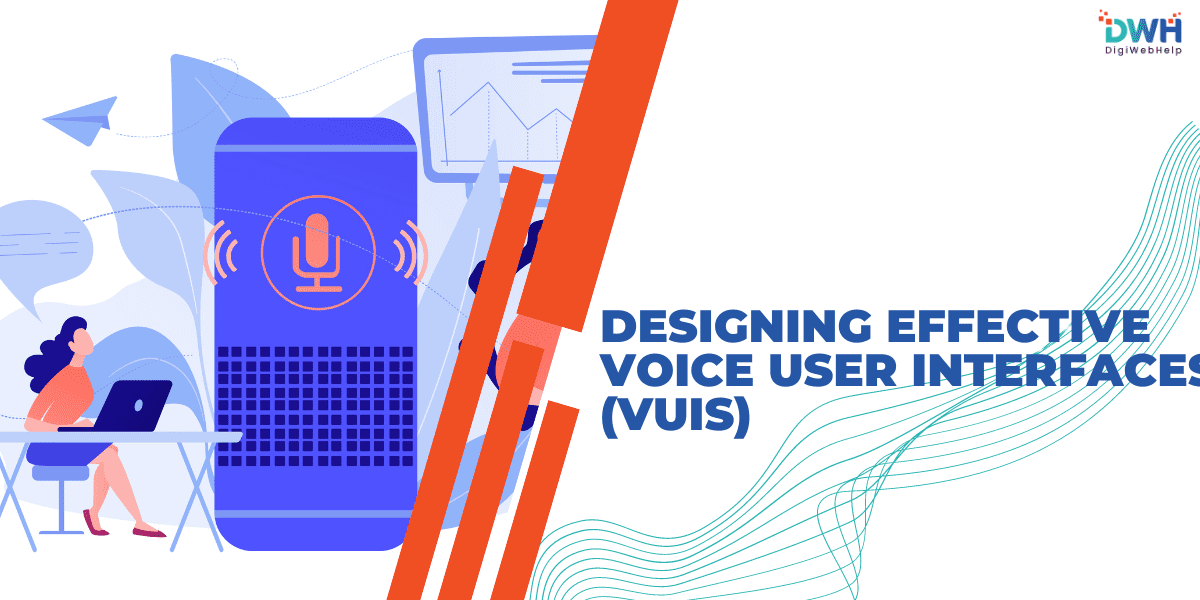
Designing Effective Voice User Interfaces (VUIs)
Voice User Interfaces (VUIs) are reshaping how we interact with technology, making tasks easier, more accessible, and hands-free. Whether through smartphones, smart home devices, or even cars, VUIs allow users to control technology using their voice, creating a seamless, intuitive experience. With the rapid rise of AI-powered voice assistants like Alexa, Siri, and Google Assistant, the importance of designing effective VUIs has never been more apparent.
As technology evolves, so does the need for smart, responsive, and easy-to-use VUIs. Developers and designers must consider how these interfaces enhance user experience, ensuring that voice interactions are natural, efficient, and context-aware. This blog explores AI voice assistants, how they function, and the principles guiding voice interaction design.
What are Voice User Interfaces (VUIs)?
VUIs are interfaces that allow users to communicate with technology through voice commands rather than traditional button clicks and touch screens. These interfaces use features like speech recognition, natural language processing, and speech synthesis.
While Graphical User Interfaces usually rely on visual elements, VUIs prioritize auditory interactions. This makes VUIs ideal for situations where hands and eyes are occupied. The easy-to-use and convenience offered by VUIs have led to widespread adoption in smartphones, home automation systems, cars, and even healthcare devices.
New developments in VUI technology highlight advancements in AI that enable smoother and human-like conversations between users and applications. Businesses are investing in enhancing VUIs to make them more context-aware, adaptive to various languages and accents, and capable of handling intricate tasks.
Key Principles of VUI Design
To create effective VUIs, designers must consider several key principles that ensure smoother and more natural communication between users and machines.
Natural Language Processing (NLP)
Natural Language Processing, or NLP, is the heart of every AI-powered voice assistant. NLP is a branch of AI that enables machines to understand and process human language. NLP is key for these voice assistants to interpret voice commands, understand context, and generate appropriate responses. It makes voice interactions with machines feel seamless and human-like.
Conversational Flow
A well-designed VUI ensures a fluid conversational flow. It allows users to interact with the system in a natural way. Interruptions and awkward pauses can disrupt the user experience for voice apps. So, maintaining a smooth back-and-forth conversation is important.
Error Tolerance
There’s no denying that users can experience misinterpretations in voice interactions. This is especially true when dealing with different accents, speech patterns, or background noise. An effective VUI design includes strategies to handle these errors smoothly. For instance, it can offer clear prompts or suggestions to fix issues without frustrating the user.
Contextual Awareness
VUIs can respond more intelligently by considering the user’s history, surrounding, and current situation. For example, when a user wants to know about the weather, the VUI can provide the relevant information based on their location, without asking additional details. This ability to understand the context enhances the overall user experience, making interactions more efficient.
Best Practices for Designing Effective VUIs
Developing a VUI that performs consistently across diverse scenarios requires attention to VUI best practices.
Keep Commands Simple and Clear
When designing voice user interfaces (VUI), it is crucial to focus on concise and easy-to-understand commands. Don’t use complex sentences or technical words that could confuse users or lead to errors. If you keep things clear and simple, voice assistants can understand commands better and give quicker results.
Use Feedback and Confirmation
It’s vital to provide feedback during voice interactions. Whether it’s confirming a task, repeating the user’s instruction, or offering alternative suggestions, feedback helps users feel confident that the system has understood them correctly. This reduces the chances of mistakes and improves user experience.
Ensure Accessibility
The voice interaction design should accommodate a diverse range of users. This includes those who speak different languages, have different accents, or live with disabilities. Making voice assistants support multiple languages, accents, and speech patterns makes it accessible to a broader audience.
Multimodal Design
Incorporating visual elements with voice interactions can improve the overall user experience. For example, smart devices with screens can show visual feedback or additional information while responding to voice instructions. This multimodal approach combines the strengths of Voice User Interfaces and Graphical User Interfaces, creating a richer user experience.
Personalization
AI-driven personalizing is a powerful tool in VUI design. By incorporating data about user preferences and behavior, voice assistants can generate responses and suggestions tailored to individual needs. This not only improves usability but also fosters deeper user engagement.
Challenges in VUI Design
Despite its benefits, VUI technology faces several challenges that designers must address.
Overcoming Speech Recognition Limitations
The biggest challenge in VUI design is ensuring accurate speech recognition across varying accents, languages, and dialects. While NLP technology has made significant progress, it still needs to improve voice assistants’ accuracy, especially in noisy environments or when processing unusual speech patterns.
Addressing Privacy and Security Concerns
Voice interactions often involve the sharing of sensitive information, like personal data or financial transactions. Voice User Interfaces (VUIs) need to protect user privacy and maintain security, especially as more devices start to use voice assistants. Developers must implement robust encryption protocols and put data control in the users’ hands.
Balancing Usability and Complexity
As VUIs are getting sophisticated, balancing simplicity with the ability to handle complex tasks is becoming a challenge. Designers must create intuitive systems that perform a wide range of functions while keeping voice interaction design easy to navigate.
Future of VUI Technology
The future of VUI technology is filled with exciting possibilities. With AI advancing constantly, voice assistants will surely become even more intelligent, responsive, and integrated in our day-to-day activities.
Predictions on VUI Advancements
The next generation of voice assistants will likely have improved AI features. These systems will be able to understand more nuanced speech and deliver hyper-personalized responses. Additionally, Voice User Interfaces (VUIs) will become more deeply integrated into the Internet of Things (IoT). This will enable seamless interaction across a wide range of devices, from smart home gadgets to cars.
Industry Impact
Voice technology is already making waves in industries like healthcare, customer support, and automotive. In healthcare, voice interfaces can be used to monitor patients, schedule appointments, and provide real-time medical advice.
In customer support, businesses use voice interfaces to simplify interactions and enhance the customer experience. Additionally, the auto industry finds voice interfaces useful for hands-free navigation of car systems, boosting safety and convenience.
Conclusion
Voice User Interfaces are shaping the future of human-machine interaction, offering users a more natural and intuitive approach to engage with technology. By understanding VUI design principles addressing the challenges associated with speech recognition, privacy, and user-friendliness, developers can create systems that meet today’s demands while also paving the way for future innovations in voice-based technology.
Unlock the full potential of your voice-enabled digital products with cutting-edge voice user interface design and enhance user experience for voice apps. Transform your ideas into intuitive, voice-powered solutions that engage and delight users.











